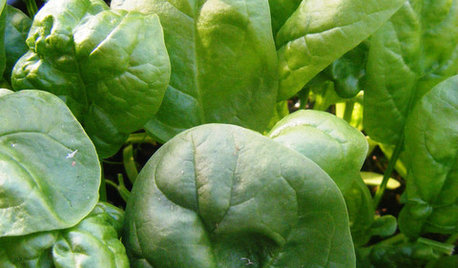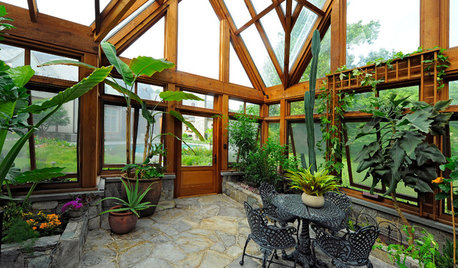Adding nutrients
speedfreakian
13 years ago
Related Stories

FARM YOUR YARDHow to Get Good Soil for Your Edible Garden
The nutrients in your soil feed the plants that feed you. Here are tips on getting it right — just in time for planting season
Full Story
COOL-SEASON CROPSCool-Season Vegetables: How to Grow Spinach
Chock-full of antioxidants and iron, spinach is a nutrient-rich addition to your fall or spring garden
Full Story
EDIBLE GARDENSThe Enticing Garden: How to Grow Bananas
Sweeten your dining table with surprising flavors of banana cultivars while adding tropical flavor to your garden
Full Story
COOL-SEASON CROPSCool-Season Vegetables: How to Grow Peas
Their sweetness isn't just for spring. Peas thrive in cool weather too, adding a garden-fresh note to soups, salads and more through fall
Full Story
GARDENING GUIDESGrow a Beautiful Garden in Alkaline Soil
Got alkaline soil? Learn how to manage it and the many beautiful plants that will thrive in this ‘sweet’ soil
Full Story
GARDENING GUIDESGardening Solutions for Dry, Sandy Soils
Has your desert or beachy site withered your gardening creativity? Try these ideas for a beautiful, easy-care landscape
Full Story
FARM YOUR YARDHouzz Call: Show Us Your One-of-a-Kind Chicken Coops
Do you have a fun or stylish backyard shelter for your feathered friends? Post your pictures and stories in the Comments!
Full Story
GARDENING GUIDESHow to Pick a Mulch — and Why Your Soil Wants It
There's more to topdressing than shredded wood. Learn about mulch types, costs and design considerations here
Full Story
GARDENING GUIDESGet on a Composting Kick (Hello, Free Fertilizer!)
Quit shelling out for pricey substitutes that aren’t even as good. Here’s how to give your soil the best while lightening your trash load
Full Story
GARDENING GUIDESWhat's Wrong With My Plant? Leaves Often Hold the Clues
Learn how to identify common plant ailments by reading their leaves
Full StoryMore Discussions






homehydro
speedfreakianOriginal Author
Related Professionals
New Bedford Landscape Architects & Landscape Designers · Deer Park Landscape Architects & Landscape Designers · Quincy Landscape Architects & Landscape Designers · Rancho Cordova Landscape Architects & Landscape Designers · River Forest Landscape Architects & Landscape Designers · Avocado Heights Landscape Contractors · Coeur d'Alene Landscape Contractors · Dickinson Landscape Contractors · Hayward Landscape Contractors · Kahului Landscape Contractors · Lemont Landscape Contractors · Longview Landscape Contractors · Waterford Landscape Contractors · West Haverstraw Landscape Contractors · Winchester Landscape Contractorshomehydro
grizzman
homehydro
grizzman
homehydro
speedfreakianOriginal Author